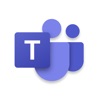Enhancing Collaboration with LMS Software in Large Teams
In today’s fast-moving corporate world, encouraging teamwork among members has never been more important-and it can also be quite difficult to achieve by big teams. The efficiency in knowledge, skills, and experience sharing will make all the difference in productivity and innovation. For large companies dealing with a huge workforce, LMS has emerged as a boon and has broken down silos to foster a culture of cooperation.
Traditionally, LMS software is associated with training and education, but its role is so much bigger, especially in the corporate world. Big teams need solutions that would serve not only learning content but also create spaces for interactions of employees, sharing ideas, and continuous learning. A properly fitted LMS can do this, offering all-round solutions to bring collaboration forward.
If your company is considering an LMS with a view to improving collaboration among teams, you need to think about the functionality of a personalized system. An experienced partner in LMS development will help you create such a solution that will correspond to the needs of your team, develop more effective collaboration, and enable a well-organized learning process. Having big potential for influencing a team’s collaboration, LMS creates an environment of communication and knowledge sharing.
How LMS Software Enhances Collaboration
LMS software is designed to ensure big teams get a chance to work together effectively on group discussions, shared projects, and peer reviews in multiple ways. Now let us go in-depth with a few ways an LMS could enhance collaboration and bring the best out of your workforce.
1. Discussion Forums/Community Spaces
One of the essential LMS features that may enhance collaboration is discussion forums or community areas. Essentially, these are communication spaces involving various team members asking questions, offering insights, or even discussing other topics apart from the training. For large teams, this space greatly improves the learning experience as employees learn from each other’s experiences and different perspectives. Community spaces within an LMS create a rapport among participants and make learning more interactive.
2. Team-Based Learning Projects
A number of teams are into various projects where collaboration is required from several verticals. This is where team-based learning projects can be enabled via LMS software, thus allowing its members to collaborate on assignments, solving problems collectively, and sharing results. This kind of collaborative learning doesn’t only equip the employees with new skills but also teaches them how to work well as a team. Such leveled, structured platform for group works on LMS ensures that the same resources are available to all and traceable contributions with easy recognition.
3. Peer Review and Feedback
Peer review is an important element in collaborative learning. The right LMS software will make it quite easy for the worker to give and receive feedback from each other. Large teams can also use peer reviews in order to boost their understanding of many subjects and different ideas that would have otherwise never thought of. In a culture of openness and continuous improvement, creating a feedback culture encourages everyone to contribute to learning from one another. This can be quite helpful for large organizations where it is evident that not everybody can interact with people other than those within their circles.
4. Virtual Classrooms and Live Sessions
For teams operating from different locations, virtual classrooms and live sessions for training are key ways to keep them connected. The LMS platform can be integrated with video conferencing tools to offer real-time interactions where employees will take part in workshops, ask questions, and share their ideas. These virtual environments allow large teams of employees to come together, interact with learning material in real time, and create a connected feeling that fosters active participation. The connectedness of staff enables them to collaborate and makes them contributors in group learning.
5. Gamification and Social Learning
Points, badges, and leaderboards are some gamification elements that might inspire employees to participate in collaborative activities. An LMS software would make the process of learning more enjoyable and, therefore, persuade team members to interact more with the content and with each other. Features in the social learning genre-where employees can share achievements or progress on social feeds inside the LMS-can be used to connect people and become inspired by the progress of peers. These tools are particularly effective for large teams that otherwise get demotivated without proper engagement strategies in place.
Breaking Down Silos with LMS
In large organizations, departmental silos could shut off effective collaboration. Employees would be confined to the particular department they report to and have little idea of what others are working on. LMS software can bridge that gap by offering cross-departmental training programs and online forums where people from different departments can interact. Combining different departments brings forth creative solutions and new perspectives, which develop a better climate in which to work.
The marketing teams can use the LMS to understand the product development process by going through selective training modules or by participating in discussion forums with specialists who are expertly qualified in product development. In fact, knowledge sharing across functions is what will remove silos and create an environment where collaboration would flourish.
Measuring Collaboration Effectiveness
One of the other critical areas in which LMS software can help in bringing about improvement in collaboration is measurement of effectiveness. Because most LMSs have analytics and reporting facilities, they can monitor engagement levels, group activity participation, and quality of peer feedback. Based on these insights, managers will be able to understand what teams are really working well together and others which may require support or motivation to push them above a critical threshold. Fully understanding how teams interact with the LMS helps mold future training programs that will encourage more collaborative activities.
The Future of Collaboration in Learning
That means collaboration in the workplace is not going anywhere, but instead, is becoming even more key as teams grow large and disperse. Similarly, LMS software will keep getting more advanced in their feature sets, including AI-powered content recommendations, adaptive learning paths, and extended social learning capabilities that make connecting and collaborating easier than ever for employees.
The potential of investing in a powerful LMS thus empowers individual learners, strengthens team cohesion, enhances knowledge sharing, and hence helps drive company success. In this respect, the need for a platform to provide for collaborative learning further scales up with company growth, and LMS software provides the bedrock on which that growth happens.
Final Comments
It doesn’t come that easily to improve collaboration within a big team, but it’s way more possible with the right tools at your disposal. LMS software provides all those features that may motivate communication, sharing, and teamwork-skills so crucial in every workplace environment. Discussion forums, peer review, virtual classrooms, and gamification are some of the ways in which companies can build a learning environment that is collaborative and truly engaging.
Whether your business is to break organizational silos or large teams working across locations, LMS can give you the main answer in terms of improving how your teams work with one another. It is time you open up your business to LMS technology and unlock real potential collaboration in the company.
Related Apps
Latest News
- Enhancing Collaboration with LMS Software in Large Teams
- How to Find Perfect Pokémon in the Wild? Unlocking the Secrets!
- How Modded Games Are Different on Mobile Devices
- Exploring the Latest AI Features in Mobile Tools
- Boost Productivity with These Game-Changing Tools
- How to Make an App Explainer Video?





